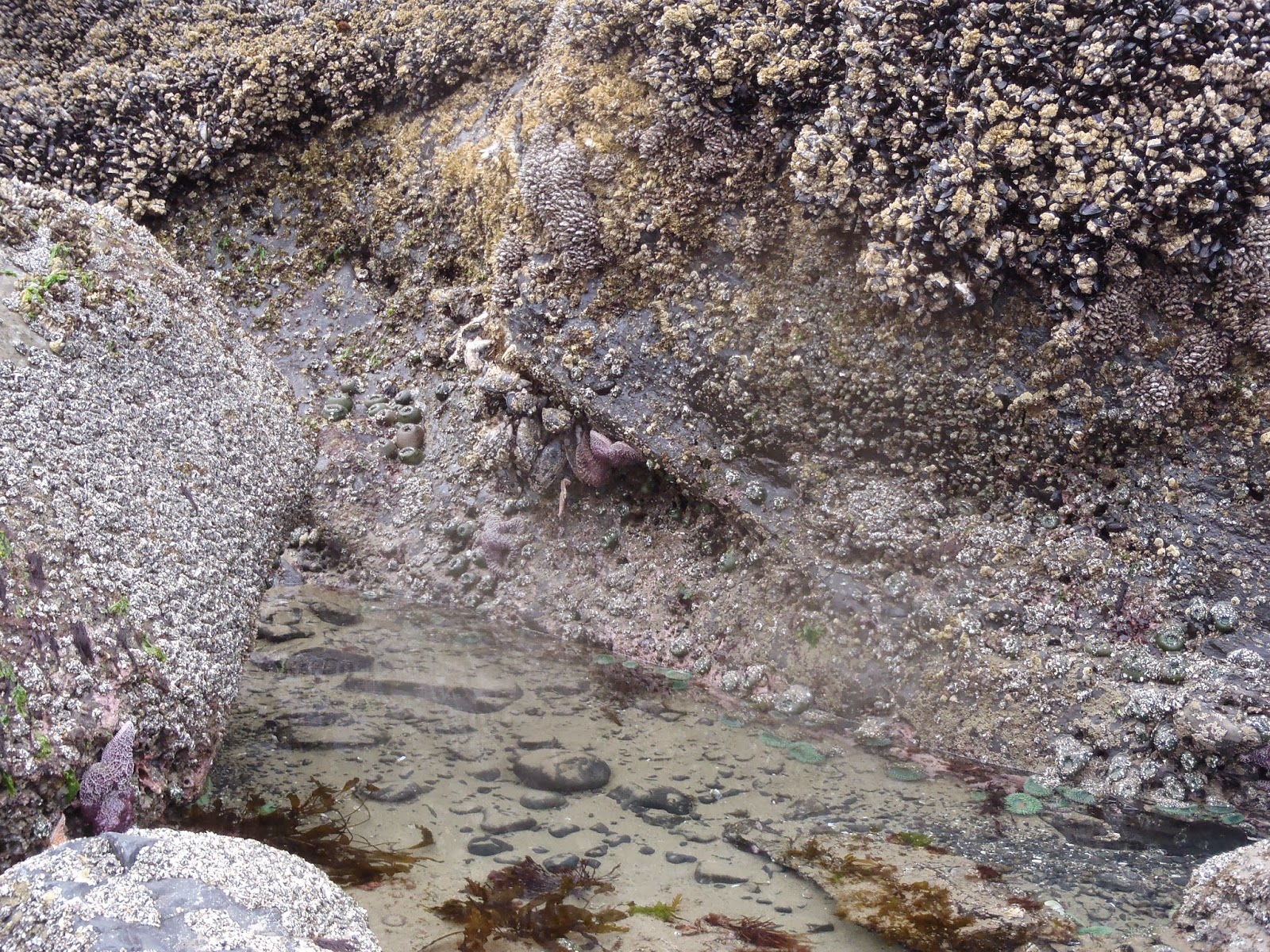Intertidal Zonation
Each creature that calls Haystack Rock home thrives in a specific environment. Some need to be submerged in water all the time, some can be exposed much of the time, others may just need a splash of water from time to time. Intertidal organisms must also cope with a broad range of temperatures. While they are underwater temperatures are relatively constant, varying by only a few degrees. But over the span of a year while exposed during low tides, temperatures may dip to below freezing or may become scaldingly hot: temperature ranges can vary significantly over a period of a few hours.
This high intertidal zone is predominantly inhabited by seaweed and invertebrates, such as sea anemones, sea stars, chitons, and mussels.
This dynamic environment leads to one easily visible feature of intertidal communities: vertical zonation - the tides cause species ranges to be compressed into very narrow bands. What appears as horizontal 'line' near the base of Haystack Rock is a reflection of zonation, with each creature inhabiting the narrow band that suits their needs.
Vertical Zonation evident near the base of Haystack Rock
Zonation between the extremes of low and high tides is categorized into the intertidal zone and the splash zone. The intertidal zone is further divided into the low, mid and high intertidal zones. The low intertidal zone is only exposed to air at the lowest of low tides and is primarily marine in character while the high intertidal zone is covered by water only at the highest of high tides and spends much of its time as terrestrial habitat. In between these two extremes, the mid intertidal zone is regularly exposed and submerged by average tides. The splash zone does not get covered by the tides but receives water from waves during high tides and storms.This high intertidal zone is predominantly inhabited by seaweed and invertebrates, such as sea anemones, sea stars, chitons, and mussels.
California Mussels (Mytilus californianus)
Exposed in the Intertidal
The low intertidal zone, exposed only during low tide, has much more marine vegetation, especially seaweeds. There is also greater biodiversity. Organisms in this zone do not have to be as well adapted to drying out and temperature extremes. Low tide zone organisms include abalone, anemones, brown seaweed, chitons, crabs, green algae, hydroids, isopods, limpets, and mussels. These creatures can grow to larger sizes because there is more available energy and better water coverage: the water is shallow enough to allow more sunlight for photosynthetic activity, and the salinity is at almost normal levels. This area is also relatively protected from large predators because of the wave action and shallow water.
Giant Green Anemone (Anthopleura xanthogrammica)
Partially exposed on this particular tide








Comments
Post a Comment